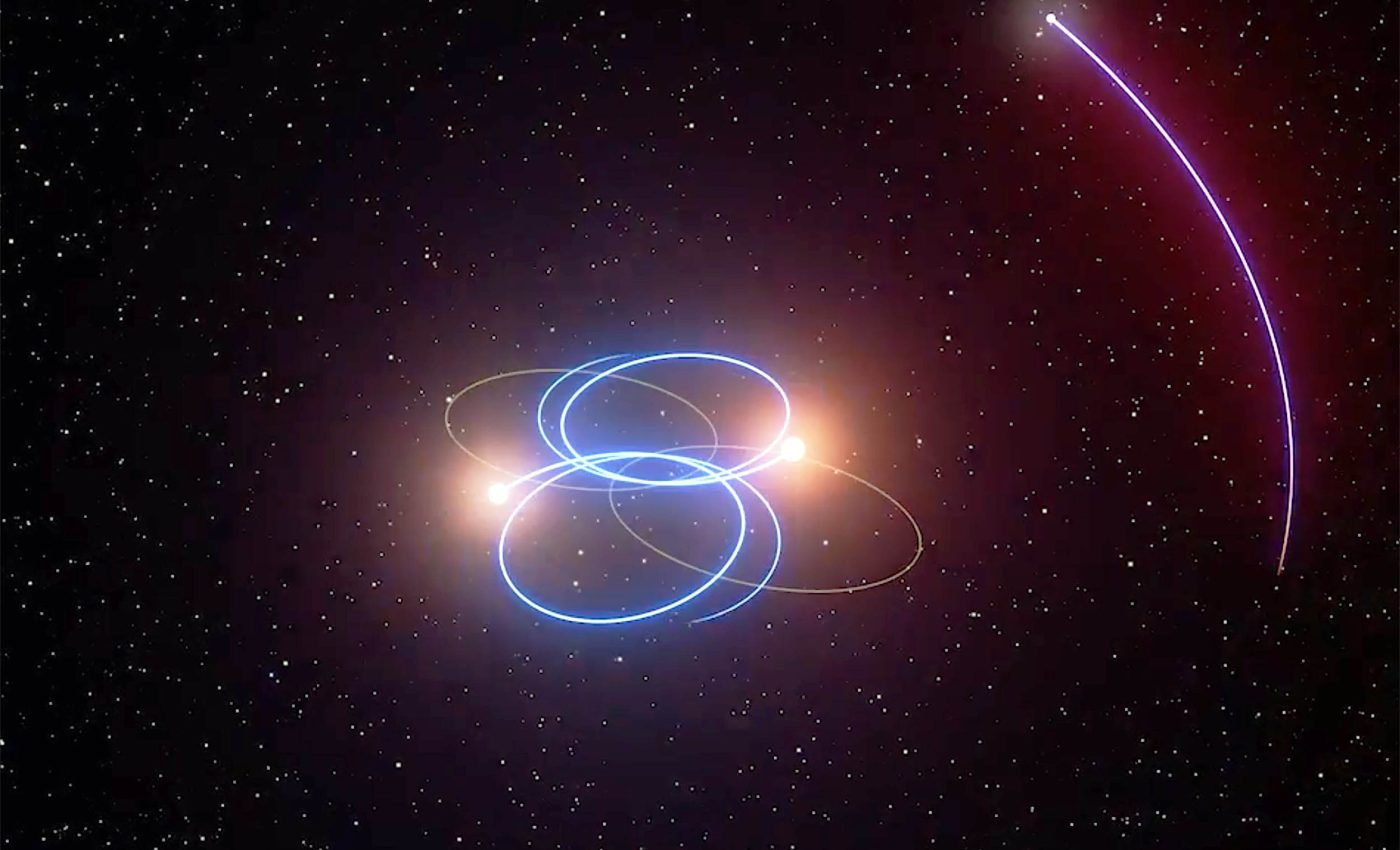
Very unique exoplanet discovered with a 'sideways' orbit around two failed stars
Researchers present strong evidence for a planet circling two brown dwarfs on a near polar path. The orbit is tilted almost 90 degrees to the pair’s motion.
The system lies about 120 light-years from Earth, roughly 700 trillion miles (1,100 trillion kilometers) away.
Lead researcher Thomas A. Baycroft of the University of Birmingham led the analysis. The hosts are brown dwarfs, celestial objects that are too small to sustain hydrogen fusion.
“We report strong evidence for a polar circumbinary exoplanet,” wrote Baycroft.
Most worlds in orbit around binaries are circumbinary, meaning that the planets orbit both stars together. Until now, every confirmed case hugged the same flat plane as the stars.
Clues hidden in a backward wobble
The team measured radial velocities – tiny wavelength shifts that reveal motion along our line of sight. Those shifts showed the binary’s orbit slowly swiveling in the opposite direction from normal.
That slow swivel is apsidal precession, which is a gradual rotation of an orbit’s ellipse. Here it is retrograde, a rare sign best explained by a third body tugging from a near polar path.
The two brown dwarfs complete an orbit around each other in 21 days. At closest approach they are about 3.5 million miles apart, a tight dance that makes such subtle effects easier to spot.
Why a polar orbit can survive
A polar path around a binary may sound precarious. Theory shows it can be stable when the inner pair follows an elongated orbit and the planet’s plane lines up perpendicular to the binary’s ellipse.
Polar circumbinary disks have been observed in young systems such as HD 98800, lending a natural route for polar planets to form.
How the evidence stacks up
Sixteen circumbinary planets had been confirmed before this current work, and all were aligned close to the binary plane. A polar case stands out because the binary’s precession goes the wrong way for tides or relativity alone.
Detecting a direct Doppler wobble from the planet is unlikely if the orbit is nearly face-on, an orientation seen from above that hides line-of-sight motion. The precession signal becomes the smoking gun instead.
The analysis constrains a family of planet masses and periods that reproduce the measured precession. The exact mass will need a second, independent handle.
Proving the polar orbit
One path is ultra-precise astrometry – measurements of a star’s position on the sky. Large telescopes can track side-to-side wobbles at tens of microarcseconds for nearby systems.
Another is to monitor eclipse timing variations which reveal the third body’s gravity as it tugs on the binary. Space photometry shows the method can detect misaligned companions when timing precision stays near a minute.
A sustained campaign combining both could pin down the polar planet’s mass and period. It would also test whether the orbit librates around the binary’s eccentricity direction, as models suggest.
Lessons about planet making
Brown dwarfs are young here, about 45 million years old. A system this fresh offers a look at architectures that may still be settling.
A planet with a polar orbit hints that a disk once stood nearly upright around the binary. That disk could have been tilted by a passing star or by the binary’s own gravity until the polar state locked in.
Finding such a planet widens the menu of stable orbits for worlds in complex systems. It also cautions that surveys biased to flat planes can miss outliers with surprising geometries.
A rare laboratory for dynamics
The brown dwarfs orbit tightly, so the planet’s gravity can twist the binary’s ellipse at a measurable rate. That dynamic back-and-forth lets astronomers weigh an unseen world without watching it transit.
A retrograde precession is hard to fake with other physics in such systems. It points to a misaligned or polar companion as the most reasonable cause.
Future work should seek timing precision near a minute over several seasons. Even non-detections would slice away large chunks of parameter space.
Why the polar orbit discovery matters
Circumbinary planets already showed that planet formation copes with two suns. A polar case shows it also copes when the traffic rules change.
Such systems sharpen theories about how disks warp, tilt, and still produce planets. They also expand the search playbook to dynamical effects beyond classic transits.
Results like this push observers to measure not just orbits but how orbits slowly turn. In that slow turn, the hidden architecture comes into view.
The study is published in Science Advances.
—–
Like what you read? Subscribe to our newsletter for engaging articles, exclusive content, and the latest updates.
Check us out on EarthSnap, a free app brought to you by Eric Ralls and Earth.com.
—–













